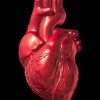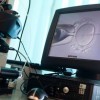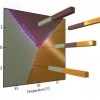This Week in Life Science – August 28th 2013

I’ve spent the last week compiling what I think are some of the most compelling breakthroughs in the science world. I had a fair bit of fun doing it, so I’ll probably make this a weekly thing. Let me know what you think in the comments below or on Google+/Facebook. Sources are cited beneath each segment. Links to published results can be found in each source I have cited.
New drug mimics beneficial effects of execise
 Mice given this drug, known as SR9009, became leaner, developed larger muscles and could run longer distances. Similar results in humans could have massive implications for those with obesity, metabolic syndrome or type-II diabetes.
Mice given this drug, known as SR9009, became leaner, developed larger muscles and could run longer distances. Similar results in humans could have massive implications for those with obesity, metabolic syndrome or type-II diabetes.
Ground Water Contamination May End Fracking Boom
It has been shown in Pennsylvania that there is a correlation between how close you live to a well used to hydraulically fracture underground shale for natural gas and how likely it is that your drinking water is contaminated with methane. Energy companies claim that this gas can breach the water supply naturally as it seeps up through the ground, but if a concrete connection between drilling and contamination is made, fracking could be in trouble.
Courtesy of Scientific American
Scientists use gene therapy to repair muscle damage in hearts
 A cocktail of genes is being used to turn the scar tissue which surround the heart after a heart attack into healthy, beating heart cells. Already successful in mice, this therapy has limited success in human test subjects until scientist tweaked the formula by adding two extra genes to the mix. Now tests on humans have shown that thanks to this treatment, dagmage to heart cells can be completely reversed – something previously thought impossible.
A cocktail of genes is being used to turn the scar tissue which surround the heart after a heart attack into healthy, beating heart cells. Already successful in mice, this therapy has limited success in human test subjects until scientist tweaked the formula by adding two extra genes to the mix. Now tests on humans have shown that thanks to this treatment, dagmage to heart cells can be completely reversed – something previously thought impossible.
Courtesy of Scientific American
Left brain – right brain hypothesis is a myth
Ive seen infographics and read articles online again and again stating the case for the left brain-right brain hypothesis, that one controlled creativity, intuition and sponteneity (always depicted with lovely flowing colours for some reason) and that the other controlled reasoning, language and logic (this was almost invariably depicted in drab shades of grey.) I always thought this was a bit idealistic and ‘fishy’ – but thats as far as this layman got with his analysis. It would appear that this particular myth has been debunked by neuroscientists at the University of Utah who used MRI scanning to show that, yes, a brain connection may be strongly left or right-lateralized but they found no relationship that individuals “preferentially” used their left-brain network or right-brain more often.
Courtesy of Medical News Today.
Teleportation made easy but not for us
 So to teleport a human being using current teleporting technolgy you would first have to measure the postion, direction of motion and energy of every particle in the body. Never mind that it is impossible to know both the position and velocity of a particle thanks to the Heisenburg uncertainty principle, if this measurement were possible it would require a stack of hard drives 20 light years high. To put that in perspective, the nearest star after the sun is 4 light years away.
So to teleport a human being using current teleporting technolgy you would first have to measure the postion, direction of motion and energy of every particle in the body. Never mind that it is impossible to know both the position and velocity of a particle thanks to the Heisenburg uncertainty principle, if this measurement were possible it would require a stack of hard drives 20 light years high. To put that in perspective, the nearest star after the sun is 4 light years away.
LSD not linked to mental illness
The long time speculation that LSD and other psychedelics cause lasting damage to the human brain has been put to bed finally. A study conducted over 5 years and encompassing 130,000 people including 22,000 who admitted to using such drugs has shown that there is no increased risk of mental illness which can be attributed to drug use. Psychedelics are different than most other recreational drugs. Experts agree that psychedelics do not cause addiction or compulsive use, and they are not known to harm the brain.
Japanese scientists use skin cells to create sperm and egg
 Japanese researchers have used skin cells from mice to create sperm and eggs that were later used to create a live birth. The implications for human reproductive science are immense, heralding forth the possibility of even infertile woman giving birth to offspring that is genetically ‘theirs.’ Not only could the research of Hayashi and his senior professor Mitinori Saitou allow infertile women to have babies by creating eggs from their skin cells, but it might make it possible for sperm and eggs cells to be created from either males or females. The evidence thus far is compelling, but it will be many years before anything like a viable treatment for infertility might be made available to the public.
Japanese researchers have used skin cells from mice to create sperm and eggs that were later used to create a live birth. The implications for human reproductive science are immense, heralding forth the possibility of even infertile woman giving birth to offspring that is genetically ‘theirs.’ Not only could the research of Hayashi and his senior professor Mitinori Saitou allow infertile women to have babies by creating eggs from their skin cells, but it might make it possible for sperm and eggs cells to be created from either males or females. The evidence thus far is compelling, but it will be many years before anything like a viable treatment for infertility might be made available to the public.
Wolves howl because they care
When a member of a wolf pack leaves the group the howling of the other members represents the wolf’s social rank rather than stress, according to researchers at Austria’s Wolf Science Centre. Those observations show that wolves howl more when a wolf they have a better relationship with leaves the group and when that individual is of high social rank. The amount of howling did not correspond to higher levels of the stress hormone cortisol.
Physicists find solid-state “triple point” in material that conducts and insulates
 The triple point referred to is a particular temperature and pressure where 3 different solid phases can coexist. The substance is vanadium dioxide, which is known for switching rapidly – in as little as one 10-trillionth of a second – from an electrical insulator to a conductor, and could be useful in various technologies.
The triple point referred to is a particular temperature and pressure where 3 different solid phases can coexist. The substance is vanadium dioxide, which is known for switching rapidly – in as little as one 10-trillionth of a second – from an electrical insulator to a conductor, and could be useful in various technologies.
Increased CO2 levels over the past thirty years have caused an 11 percent increase in green foliage over the Earth’s arid regions
I’m not saying “greenhouse gas – it aint all that bad!” but it has been reported by Australian scientists that when CO2 levels increase the water use of individual leaves drops. Plants in arid environments will respond by increasing their total numbers of leaves. These changes in leaf cover can be detected by satellite, particularly in deserts and savannas where the cover is less complete than in wet locations. This is known as CO2 fertilisation and has the potential to boost forestry and agriculture in these regions – but not without potential fallout.
Teaching kids to share: Giving choices rather than rewards is better, study says
 Giving kids the choice to share rather than demanding they do fosters a more caring and sharing attitude according to findings published last week in the Journal of Psychological Science. A child’s attitude toward generosity is largely shaped by his or her self image as a ‘sharer’ or not – something they need to explore for themselves.
Giving kids the choice to share rather than demanding they do fosters a more caring and sharing attitude according to findings published last week in the Journal of Psychological Science. A child’s attitude toward generosity is largely shaped by his or her self image as a ‘sharer’ or not – something they need to explore for themselves.
Check out the Life Science home page to see what going on on the science jobs market.
About the author: Conor Hughes works as a Marketing Executive at Life Science Recruitment
